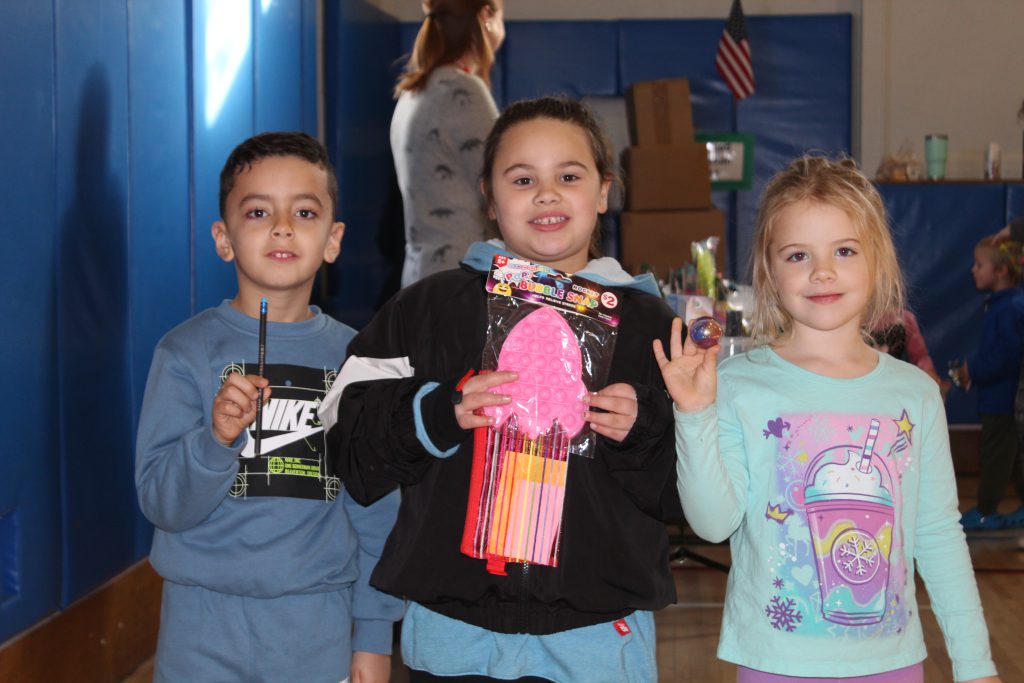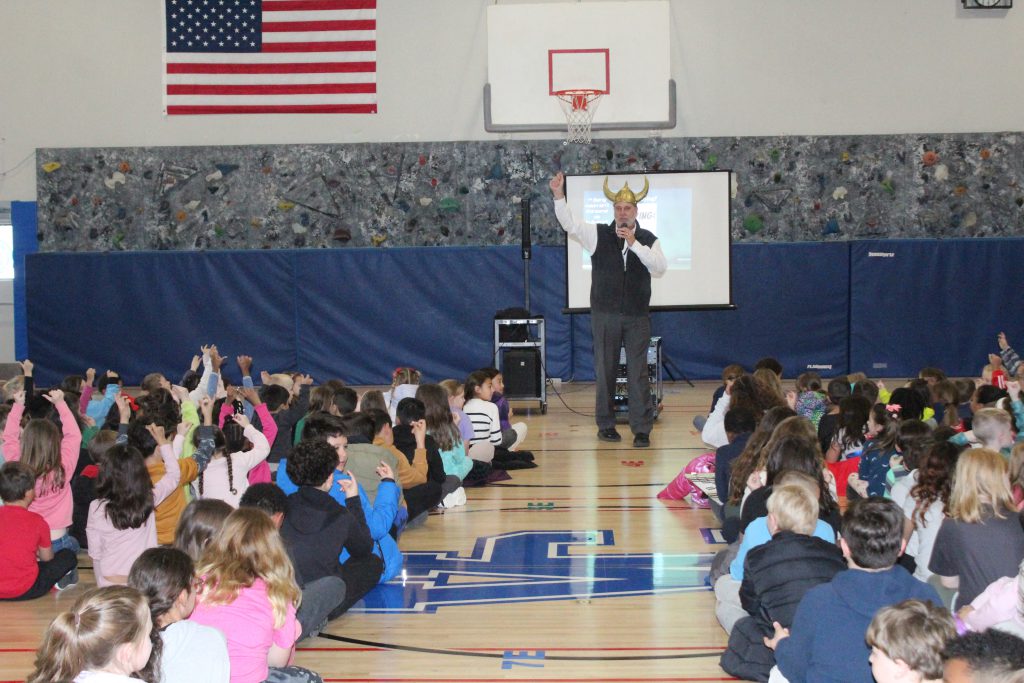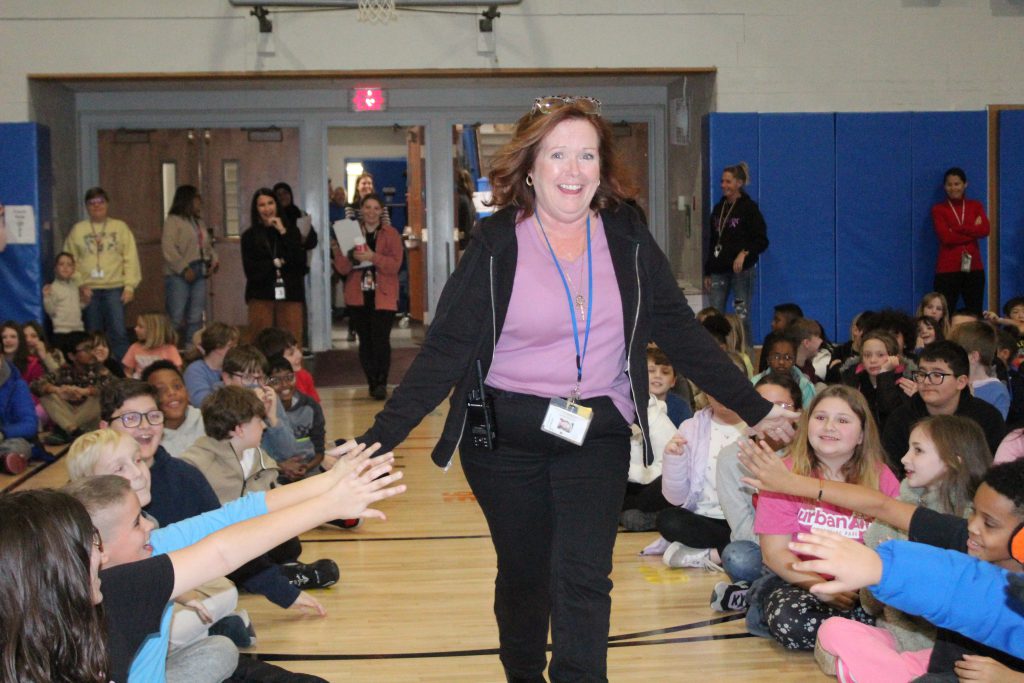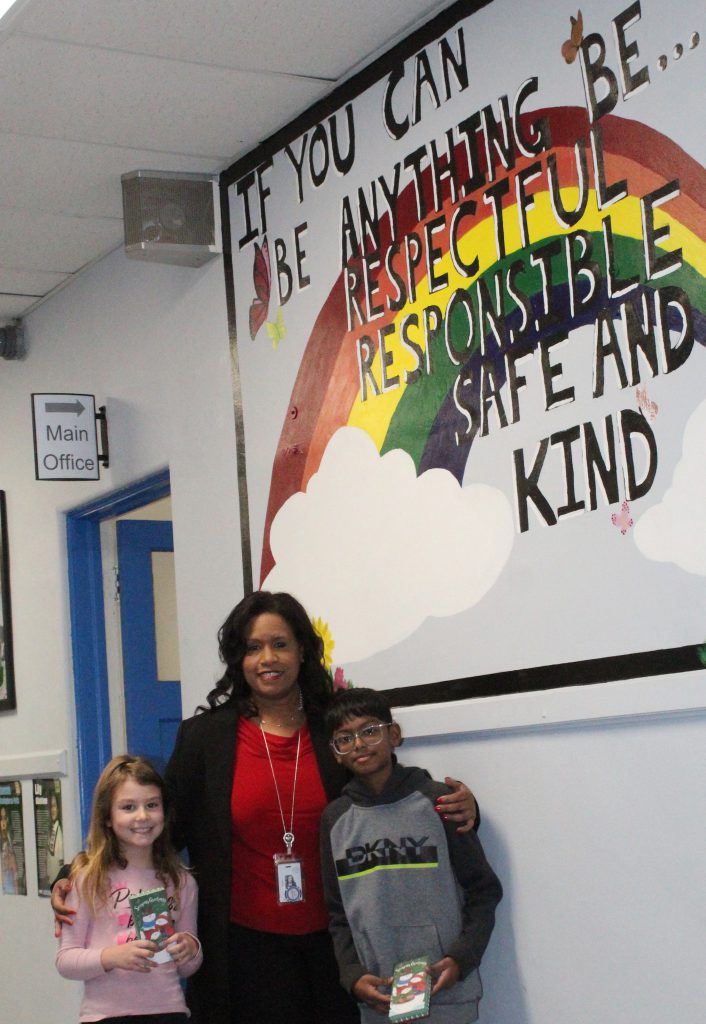“It takes a village to raise a child.” Schools have long been considered as part of a child’s village or community. For the past seven years, Walden Elementary School has been utilizing Positive Behavioral Interventions and Supports (PBIS) to cultivate a caring school community where every person contributes to student engagement and success.
PBIS is an evidence-based framework designed to create positive, predictable, equitable, and safe learning environments where everyone can thrive. Every staff member in the building–from administrators, teachers, paraprofessionals, counselors, food service workers to custodians–plays a crucial role in identifying and rewarding positive behavior.
Guided by Walden Elementary School’s core values: respectful, responsible, safe, and kind, whenever an adult in the school sees a student exhibiting one of these values, they immediately praise the student for the behavior and give them a Viking Buck. This school currency can be collected and exchanged by the student for a prize at the school store. The most important part of the process is explaining to the student why they earned the buck. Parents are also encouraged to ask their children if they earned any Viking Bucks that day and why, which reinforces the positive behavior at home.
“My son, especially, is extremely happy every time he gets Viking Bucks,” says Ashlee Barrett, Walden Elementary School PTO member and parent to 4th grader Elizabeth and 3rd grader Everett. “He usually saves them to get a bigger prize. When he gets home from school he’s excited to tell me why he earned Viking Bucks. It’s been helpful in getting him excited about school, which is something he used to struggle with,” she explains.

In addition to Viking Bucks, students can be nominated by any adult in the school for a Classroom Citizenship Award for being helpful or a Star Student of the Month Award for their academics and for demonstrating the school’s values. Award recipients are recognized at the school’s monthly PBIS assembly.

“The basic tenet is to use extrinsic motivation so that, over time, it becomes intrinsic motivation to help others,” says Gregory Heideman, principal of Walden Elementary School. “Last year, we incorporated PBIS into our strategic school improvement plan, and we saw a decrease in peer-to-peer disciplinary events by 25%, which was our goal. Prior to that, we had students who were physical with one another, who couldn’t agree, or compromise,” he explains.
Positive reinforcement isn’t just for students at Walden Elementary. Staff members are also encouraged to nominate their co-workers for special recognition. Every month a staff member is celebrated for their exemplary contribution at the PBIS assembly.

When using PBIS, the whole school community benefits. Teachers, as well as other staff members, experience less stress when they spend less of their time addressing behavioral issues inside and outside of the classroom. Students spend more time focused on academics and building healthy relationships with one another.
“PBIS gives teachers a way to recognize the students who are doing the right things and I think they appreciate that. Not only does PBIS decrease negative behaviors in the classroom, it gives everyone a common language for what is expected and because the entire school participates, students go into each subsequent school year already knowing the school’s values” says Stephanie Mineo, student assistance counselor and valued team member of the PBIS committee at Walden Elementary School.
“Part of our district’s vision is to empower and prepare students to lead choice-filled lives,” says Evette Avila, superintendent of Valley Central School District. “That means ensuring that our students have opportunities available to them, but also preparing them to make good choices for themselves and others. Not only are the students excited to earn rewards for themselves, they will also use their Viking Bucks to purchase prizes for their younger siblings. We see how this framework can shift a child’s mindset from ‘me’ to ‘we.’ PBIS is creating a school community that truly cares about each other, and we expect to see its effects ripple out to the Middle School, High School, and beyond” she says.


